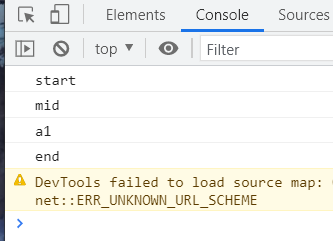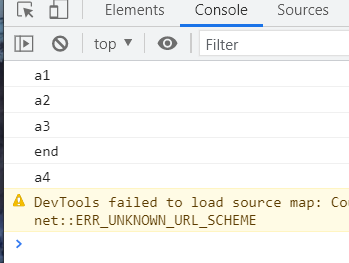1.await关键字只能在async函数中使用
2.await 相当于then,获取promise—resolve的结果
<script>/* await1.相当于执行了promise的then函数2.await后面不一定更promise3.await阻塞了代码执行流程,会优先执行后面的同步任务*/async function show(){console.log("start");await mid();// var res =await mid();// console.log(res);console.log("end");}async function mid(){console.log("mid");return 1;}show();console.log("a1");</script>

<script>/* await会阻塞函数的执行,会优先执行await后面同步的代码,异步代码等待同步代码执行完毕后再去执行 */async function a1(){console.log("a1");await a2();console.log("end");}async function a2(){console.log("a2");}a1();console.log("a3");Promise.resolve().then(()=>{console.log("a4");})</script>

标准洋葱模型
const koa =require("koa");const { nextTick } = require("process");const app=new koa();/* app.use(fn) fn--中间件中间件:路由匹配之前和路由完成之后要进行的一些操作就加中间件*//*中间件函数有两个参数:ctx nextnext指的是下一个中间件*/app.use(async (ctx,next)=>{console.log("fn1")var res = await next();console.log(res);console.log("4");})app.use(async (ctx,next)=>{console.log("fn2")await next();console.log("3");return "second"})app.listen(4000);/*fn1fn23second4*/
使用中间件执行过滤
ctx.path —-可以获取路由的路径
const koa =require("koa");const app=new koa();const router =require("koa-router")();/* 如果没有next,下一个中间函数不会执行 *//* 没读取一个路由页面,都会经过这个中间件函数 */app.use(async(ctx,next)=>{console.log("login");console.log(ctx.path); ---可以获取路由的路径if(ctx.path=="/user"){ctx.body="不可查看"}else{await next();}})router.get("/",async ctx=>{ctx.body="首页"})router.get("/user",async ctx=>{ctx.body="核心代码"})router.get("/my",async ctx=>{ctx.body="my"})app.use(router.routes())app.listen(4000);

